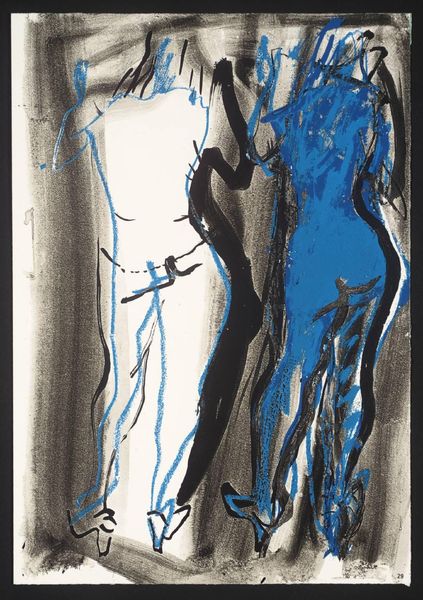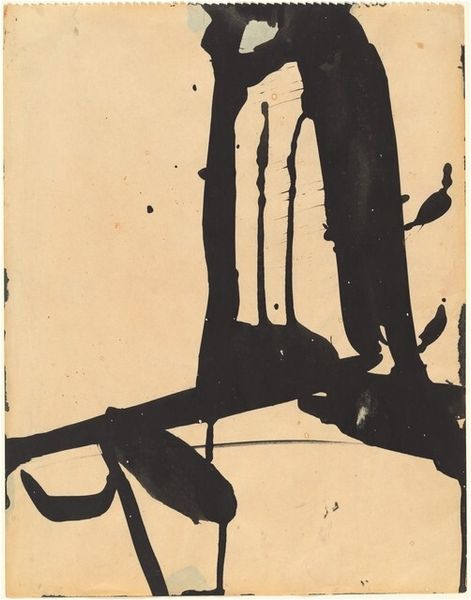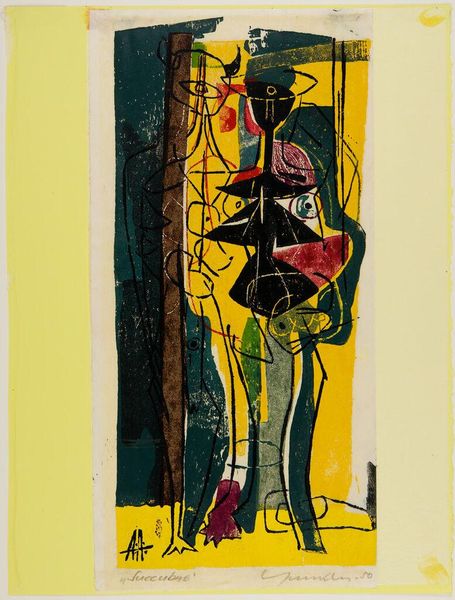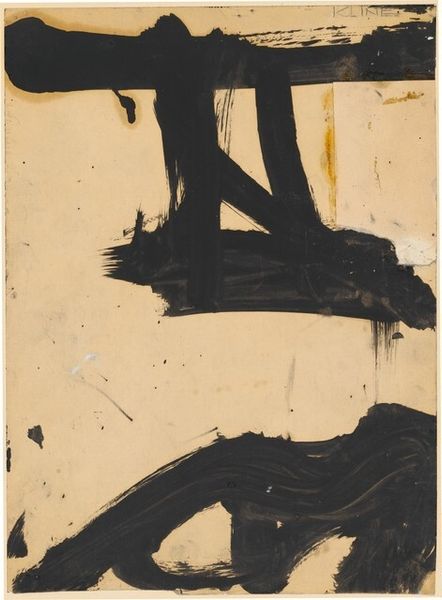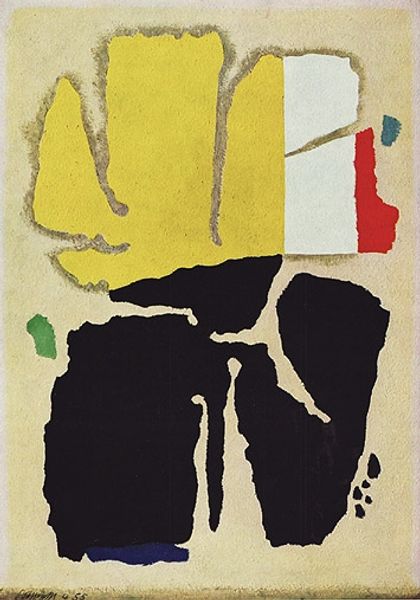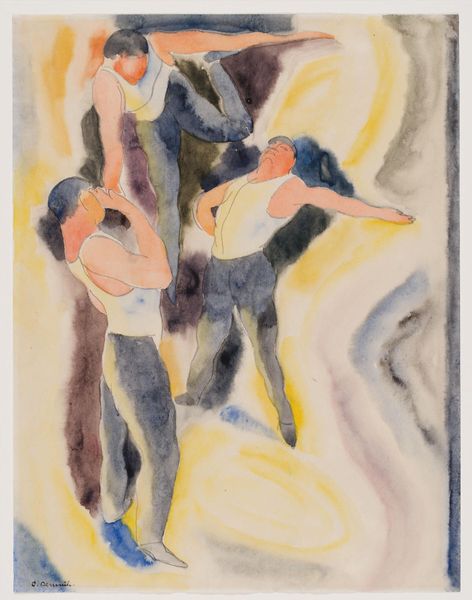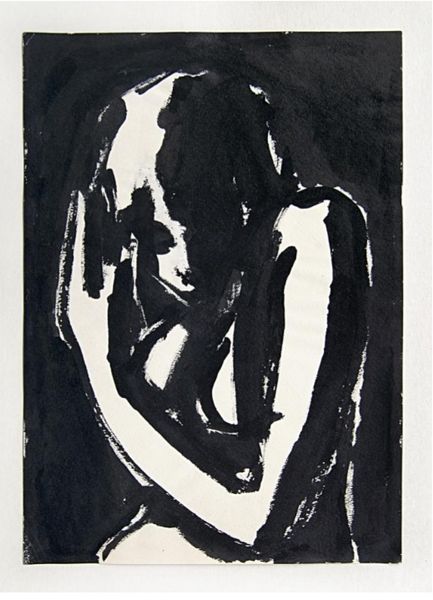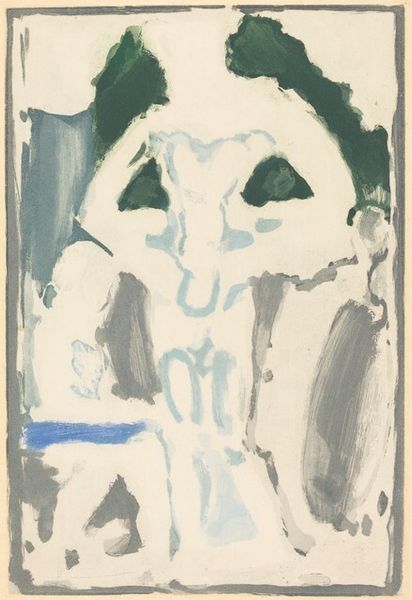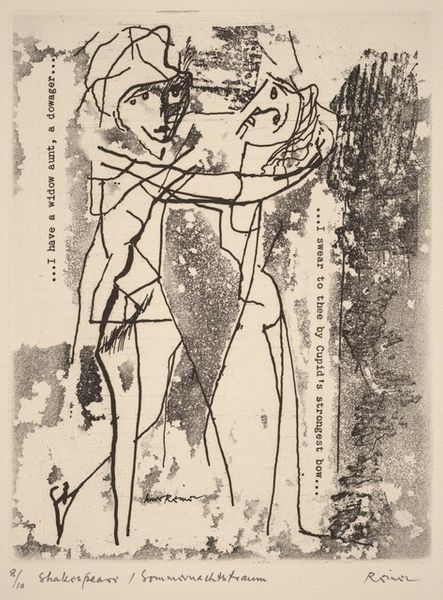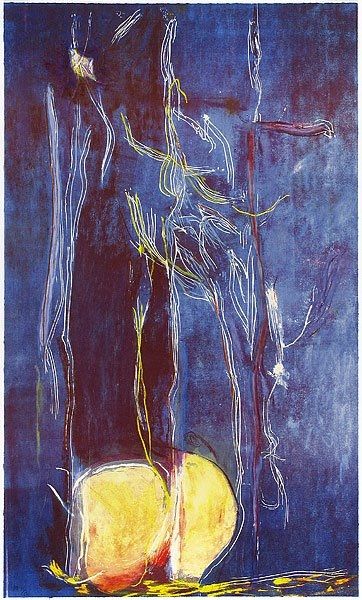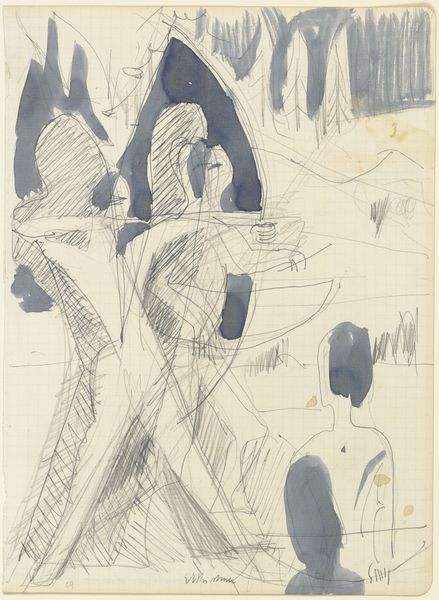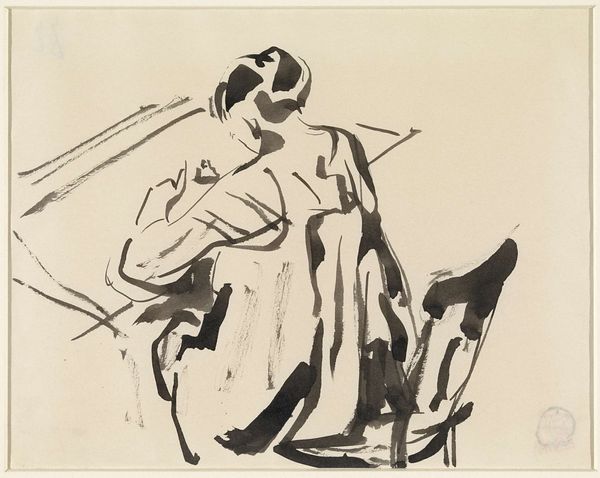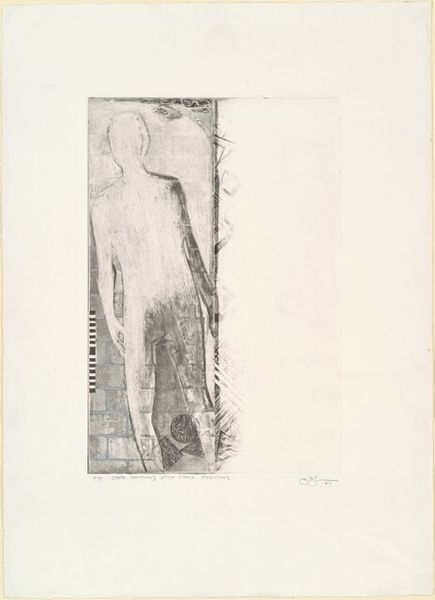
drawing, lithograph, print
#
portrait
#
abstract-expressionism
#
drawing
#
lithograph
# print
#
figuration
#
line
Dimensions: overall: 66 x 50.4 cm (26 x 19 13/16 in.)
Copyright: National Gallery of Art: CC0 1.0
Curator: Marino Marini's 1953 lithograph, "Juggler and Two Horses, Blue, Yellow, and Black," is a fascinating example of post-war Italian art. What strikes you initially? Editor: It’s wonderfully awkward, isn't it? Those spindly horses! The juggler's stance is pure precarious elation. I find that combination compelling—like joy on stilts. Curator: Indeed. Marini’s choice of lithography is crucial. The process allowed him to exploit the inherent roughness of the stone. See how the lines are etched and broken? The artist left visual clues about his engagement with material processes, especially in creating multiple nearly identical editions. This particular impression highlights labor by using starkly contrasting color fields as a deliberate effect, challenging conventional print aesthetics. Editor: I see what you mean about the texture—that rawness! Almost like charcoal, smudged just so. The blue of the juggler seems to bleed, offering the figure this restless feeling. Does it mirror the uneasy optimism after the war, do you think? Curator: Undoubtedly. Consider also Marini’s subject matter. The horse and rider was a recurring theme, a commentary on the changing human condition and the mechanization of labor post-industrialization, presented in mass producible format such as this one. Editor: True! It is an evocative statement. Yet, he distills the figures to their essence, it seems almost primal. One horse feels trapped in shadow, and the other seems to be illuminated for judgement; even the acrobat seems unsure of their place in the new world order. It also captures the feeling that even great strength can often depend on precarious, delicate balance. Curator: The line work is especially economical in suggesting this sentiment—achieving such depth of feeling with minimal means. A remarkable synthesis. Editor: Precisely, a powerful piece that feels both deeply personal and speaks to much larger themes. Curator: An intriguing intersection that provides insights on labor, artistic intent, and our own perception of form.
Comments
No comments
Be the first to comment and join the conversation on the ultimate creative platform.
